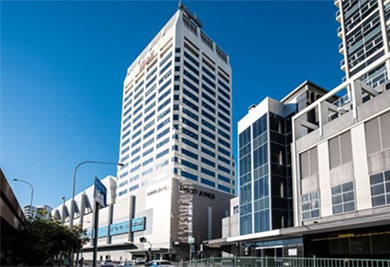Ankle Sprains: Their long term cost
I’m sure most people (especially considering you have clicked on this article) are aware of what a sprained ankle is. If not, you know when you step on the edge of a gutter and roll your ankle? Or playing basketball/netball/any sport imaginable and have to stop to change direction, and go over your ankle then? That is an ankle sprain it results in the damaging of the ligaments that stabilise the foot-leg hinge!

Most common of these sprains is the lateral ankle sprain, occurring from excessive inversion (forcing the heel bone to move towards the other foot). The ankle is at most risk of this injury when slightly pointed down (planterflexed), and already placing tension on the ligaments supporting the outer ankle.
Lateral ankle sprains are the leading musculoskeletal injury occurring in physically active populations
Similar to muscle strains, there are three grades of ligament sprains.
- Grade One – Slight stretching with damage to ligament fibres.
- Grade Two – Increased pressure resulting in partial tear.
- Grade Three – Complete rupture of ligament.

As you can expect, with each of these levels there are increasing levels of swelling, pain, instability and loss of function. What you can also expect are varying levels of healing periods, as well as treatment outcomes.
Healing rates vary between the severity of the injury. You can expect a grade 1 sprain to take somewhere between 5-14 days to “heal”, grade 2 sprains sit somewhere in the 4-6 week period, and grade 3 tops it out at 8-12 weeks. Now, I say “heal” because of the misconception of absence of pain defining a fully functioning ligament.
Being out of pain does not mean you are healed.
The most important thing to do following an ankle sprain is rehabilitation. The research shows the number one risk factor for a sprained ankle is a previously sprained ankle, and this can attributable to inadequate rehabilitation.
In the process of a ligament sprain, there is also inevitable damage to the local nervous system, which negatively impacts your proprioception (ability to recognise your body position in space). Without the appropriate rehabilitation, you significantly increase the risk of subsequent ankle sprains.
Poor rehabilitation and continued re-occurrence lead to a large percentage of people suffering ankle sprains to develop chronic ankle instability. And if you yourself, or you know someone who falls into this category, then you need to continue reading…
So where does the long-term cost of poorly rehabilitated ankle sprains come in..?
There are arguments and studies suggesting and identifying that chronic ankle instability results in decreased physical activity, primarily as a result of loss of confidence in the ankles ability to perform movement safely. The other consideration is the effect that rolling the ankle can have other aspects of an individuals life (income earning ability, and ability to play with kids are a few examples of the impact a rolled ankle can have!) and effecting quality of life.

Arguably the most concerning outcome of poor ankle stability and reoccurring ankle sprains is Osteoarthritis (OA) of the ankle joint! Ligaments are designed to allow joints to move within a safe range of motion, and when they are stretched or torn they no longer have the ability to restrict joint range. This can result in the bones in the ankle joint to twist and tilt in directions they aren’t designed to go in, resulting in wearing down of the smooth joint cartilage and early onset OA, with surgery the only viable option for management at this stage.
Ok so HOW do I treat my sprained ankle?
Due to the nature of an ankle sprain, proper rehabilitation consists of protecting the joint, proprioceptive rehabilitation and strengthening. Allowing time for the ankle to “heal” and feel better does NOT mean you are ready to return to activity.
Proprioceptive retraining is one of the most vital parts of rehabilitation. Without it, the nerves around your ankle do not signal your brain the necessary information as to where the foot is, and you cant properly execute the desired muscular contraction to influence or control the joint movement. Therefore, the brain does not know when the ankle is at a critical tipping angle and the foot is at high risk of rolling (resulting in more damage).
Take home message
Following an ankle sprain, the structures around the ankle have succumbed to trauma that reduce the ability for the body to be able to appropriately support the ankle. This results in significantly increasing the risk of subsequent ankle sprains leading to chronic ankle instability and negatively impacts multiple aspects of your life.
If you feel you fall into this category, be proactive and prevent further complications down the track! Seek out the help of a qualified health practitioner (Podiatrist or similar) who specialises in lower limb injuries and rehabilitation.
Additionally, if you would like to some read more on ankle sprains there is plenty of recently published research. Click on any of the articles below to be taken through. Thanks!
Intrinsic Risk Factors of Lateral Ankle Sprain: A Systematic Review and Meta-analysis by Kobayashi T, Tanaka M, Shida M, 2017. This paper was awarded the prestigious T. David Sisk Award for Research Excellence and also earned the honor of Best International Paper.
The effects of ankle braces and taping on lower extremity running kinematics and energy expenditure in healthy, non-injured adults by Tamura K, et al, 2017.
Effect of taping on multi-segmental foot kinematic patterns during walking in persons with chronic ankle instability by Dingenen B et al, 2017.
Evidence review for the 2016 International Ankle Consortium consensus statement on the prevalence, impact and long-term consequences of lateral ankle sprains by Gribble PA, et al, 2016.
Leave a reply



Leave a reply